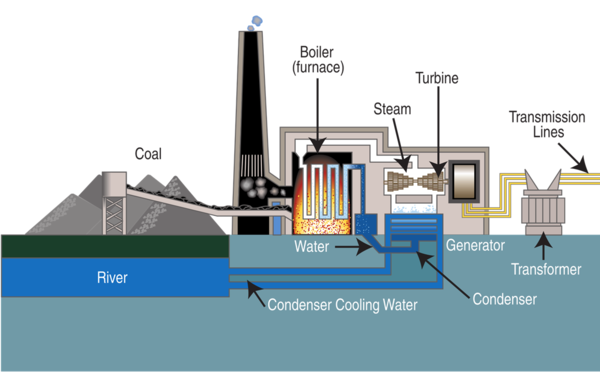Difference between revisions of "Coal"
| Line 20: | Line 20: | ||
: 4. The turbine causes a generator to spin. | : 4. The turbine causes a generator to spin. | ||
: 5. The generator makes an electrical current. | : 5. The generator makes an electrical current. | ||
| + | |||
| + | ====Advantages==== | ||
| + | *Can work continuously. | ||
| + | *Few power stations needed to supply a large number of houses. | ||
| + | |||
| + | ====Disadvantages==== | ||
| + | *Cost of fuel. | ||
| + | *Produce Carbon Dioxide contributing to global warming. | ||
| + | *Other pollutants produced which can harm health or produce acid rain. | ||
| + | *Coal will run out. | ||
Revision as of 09:40, 9 October 2018
Key Stage 3
Meaning
Coal is a solid Fossil Fuel formed from fossilised plants.
About Coal
- Coal is a non-renewable energy resource.
- Coal has energy in its chemical potential energy store which can be transferred into a thermal energy store by combustion.
Power
- Coal can be used to provide power directly buy burning it in homes, steam engines and furnaces or it can provide power by generating electricity.
| A diagram of a coal power station. |
- 1. Coal is burned in a furnace.
- 2. Water is heated in a boiler by the burning coal.
- 3. Water turns to steam and passes down pipes to turn a turbine.
- 4. The turbine causes a generator to spin.
- 5. The generator makes an electrical current.
Advantages
- Can work continuously.
- Few power stations needed to supply a large number of houses.
Disadvantages
- Cost of fuel.
- Produce Carbon Dioxide contributing to global warming.
- Other pollutants produced which can harm health or produce acid rain.
- Coal will run out.
